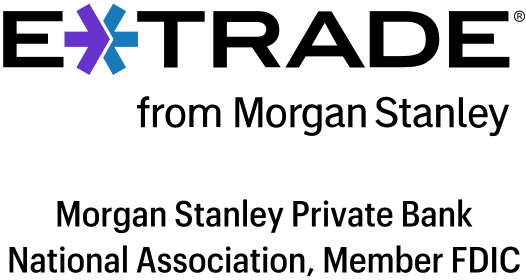9 Types of CDs: Which Should You Choose?
Not all CDs are alike — they differ in terms, interest and other features.

Many, or all, of the products featured on this page are from our advertising partners who compensate us when you take certain actions on our website or click to take an action on their website. However, this does not influence our evaluations. Our opinions are our own. Here is a list of our partners and here's how we make money.
Certificates of deposit are savings accounts for dedicated sums of money for a fixed period of months or years. But under that umbrella, there are different types of CDs, some with special features. Think of it like this: If every CD were a locked storage box for your money, here’s how nine types of CDs would work.
1. Standard CD: The regular box
A standard CD has five basic features: a fixed interest rate, a fixed term, a minimum deposit, an early withdrawal penalty and federal deposit insurance. Banks and credit unions offer CDs with a variety of interest rates and terms, typically from three months to five years. Nearly all CDs are federally insured (which protects your money in case a bank or credit union goes bankrupt), and most CDs resemble standard CDs with one or two differences.
If this CD were a box: It would have a time-sensitive lock that opens after a scheduled period. If you wait until then, you receive the original cash amount plus guaranteed interest. But if you break the lock early, the bank charges you a penalty.
2. High-yield CD: Like a regular box, but with more gems
High-yield CDs stand out because the interest rates are among the best. Online banks tend to offer these CDs, which can earn at least double what the national average CD rates can. (See our comparison table.) These CDs function just like standard ones, meaning they have set term lengths and are federally insured.
If this CD were a box: It would come with more gemstones than other boxes, boosting your wealth the fastest.

» Ready to see more? Check out our best CD rates this month
3. Jumbo CD: The big box
A jumbo CD is a CD with a minimum deposit of around $100,000, but it can be lower, such as $50,000. A standard CD, in contrast, has an opening minimum much closer to $0 than $100,000, and a few online bank CDs don’t require a minimum. Jumbo CDs have slightly higher rates than regular CDs on average and when comparing rates at the same bank, if available, but the best CD rates tend to be on CDs with minimums of $5,000 or less.
If this CD were a box: It would come only in a large size, able to fit over six figures of cash.
» Want to see examples? View our best jumbo CD rates
4. No-penalty CD: The box with a breakable lock
A no-penalty CD, also called a “liquid CD,” lets you withdraw early for free. That makes this CD similar to a savings account with the big exception that your rate won’t change over time. The two catches: No-penalty CD rates tend to be lower than high-yield CD rates, and there are usually no partial withdrawals allowed.
If this CD were a box: You could break the lock whenever you like after the first few days. But once you do, you’ll likely get all your money back at once.
» Compare the best no-penalty CD rates
5. IRA CD: A box within a box, both locked separately
An IRA CD is a CD within an individual retirement account. An IRA can hold more than one CD as well as other investments, such as stocks and bonds. CDs, along with money market deposit accounts, generally make up the cash portion of a retirement portfolio, which is usually smaller than other parts.
If this CD were a box: It would be one box (the CD) inside a bigger box (the IRA). And you’d want to be careful about withdrawing early. Both a CD and an IRA lock up your funds until a future date, so opening an IRA CD early might mean breaking two locks at once — which would mean paying two penalties, and potentially affecting your taxes.
» Learn more about the best IRA CD rates
Marcus by Goldman Sachs High-Yield CD

4.10%
1 year
Bread Savings® CD

4.45%
6 months
Alliant Credit Union Certificate

4.00%
1 year

Member FDIC
Discover® CD

4.00%
1 year
6. Step-up or bump-up CD: The box that allows more gems over time
This type of CD lets your interest rate increase during the term. The difference between step-up and bump-up CDs is who gets to choose when the rate change happens. The bank gets to decide for a step-up CD, while you’re in the driver’s seat for a bump-up CD (also called a raise-your-rate CD). Ally Bank, Synchrony and Marcus by Goldman Sachs all have bump-up CDs.
A step-up CD tends to have a fixed schedule, such as yearly, for each rate change, while a bump-up CD has more uncertainty. You can request a rate boost for a bump-up CD only if the bank is currently offering new CDs at a higher rate than the one you opened, for the same term length. Otherwise, you’d want to keep your rate the same.
If this CD were a box: More gems can be added over time to build wealth at a faster speed.
» See more about step-up and bump-up CDs
7. Add-on CD: The box that allows additional deposits
Add-on CDs give you the chance to add contributions over time, like a savings account. CDs normally restrict you to one deposit when you open. But if you get a higher-paying job or come into some money, it can be nice to push some of those funds into an existing CD. An add-on CD is a rare CD type; two places that offer them are Bank5 Connect and Boeing Employees’ Credit Union. You might not find the best rates, though.
If this CD were a box: It would have a coin slot on the side for putting in more cash over time.
8. Brokered CD: The box available at a brokerage
A brokered CD is issued by a bank or credit union, and you buy it through an investment firm, also known as a brokerage. Like standard CDs, brokered CDs are federally insured and have a fixed interest rate. A key difference occurs if you want your funds early. The only way to access funds in a brokered CD before the term ends is by selling the CD in a marketplace, which is generally an online platform where people buy and sell CDs. If you sell, there’s a risk that you’ll end up with less value than you bought the CD for.
If this CD were a box: It would be created by a bank, shipped to a brokerage and made available to buy and sell.
» Explore more details on how brokered CDs work
9. Foreign currency CD: The box with non-U.S. gems
The foreign currency CD, a rare and more complex type of CD, ties your money to the value of foreign currencies. This CD doesn’t have a guaranteed return because the interest you’ll earn is based on one currency or a basket of currencies determined by the bank. This creates some risk: Currencies fluctuate based on various factors, including changes in foreign governments as well as international economic conditions. Plus, your money will go through exchange rate conversions that may end up losing value once reverted back to U.S. dollars. Unless you’re well-versed in these risks as an investor, the foreign currency CD might not be for you.
If this CD were a box: It would have gems without a guaranteed value. Once the box is back in your hands, the gems might be a boost to your original cash amount — or they might have a negative value that means you lose money.
Bottom line: Choose the CD that helps you most
The variety of CDs might be fun to explore, but remember that the purpose of a CD is to earn interest on some savings. Focus on rates above all, and consider what CD terms you need, since not every type of CD is available in every term. Once you’re ready, find the right CD to box in your money.













